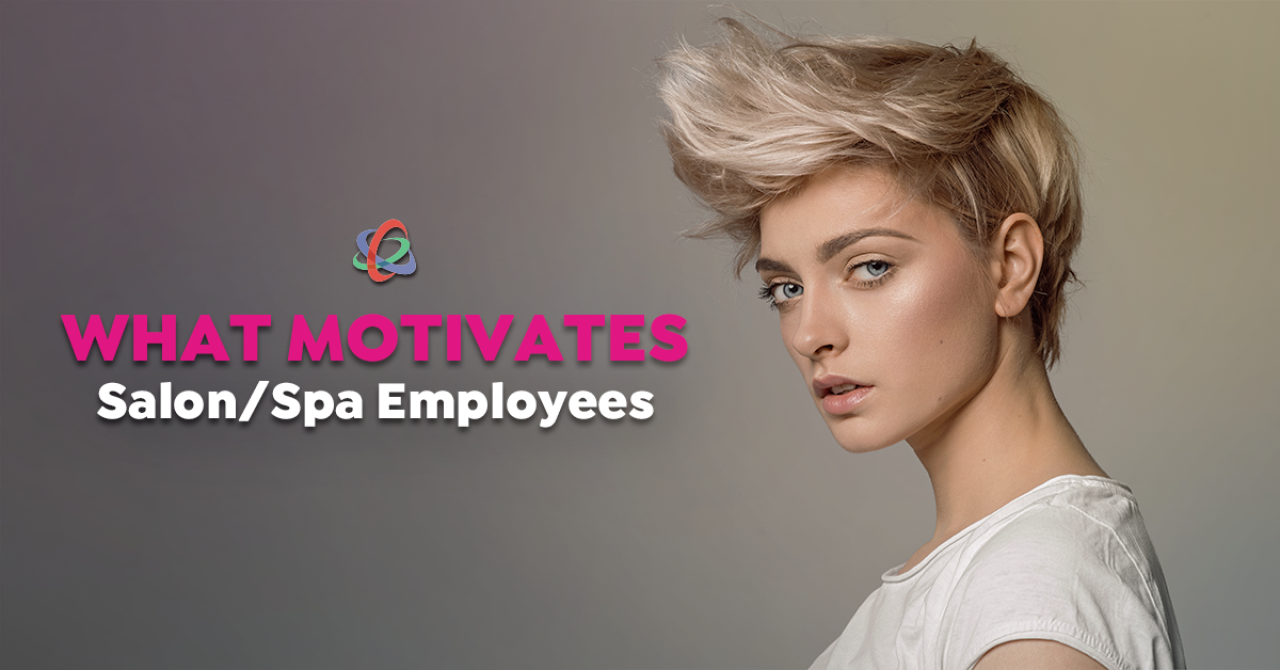What Motivates Salon/Spa Employees

Michell Bartlein, owner of Savoye Salon Spa, located in Green Bay, WI, and Team-Based Pay Award Winner, posted the following in our Strategies Salon Spa Business Idea Exchange discussion group on Facebook:
We are very selective who we allow on our team. I find myself struggling to discover what makes service providers tick and be motivated. Am I focusing on the wrong area?
I want to grow our team but struggle with the graduates coming out of cosmetology school. So, we decided the best thing to do is to go visit the schools, right?!
Yesterday a team member and I went to a school and did a presentation on “Life After School.” We presented a 50,000-foot view of need to knows including an overview of the different pay systems. The students were very engaged.
I also figured that this would be a great test group to help me better understand the next generation’s thinking. I gave them three simple questions to answer.
Question 1: What are the top five things that motivate you?
To my surprise, 44 out of 50 DID NOT list “money” in their top five. What motivated them most was fulfilling their passion and being part of something special.
Question 2: What type of salon do you see hope to work in?
95% answered “team based.”
Question 3: What other topics would you like us to present?
All answered, “more of this!”
They loved the presentation and were eager to learn more about the topics we discussed.
We NEED to be in the schools to deliver the amazing opportunities that employee-based salons/spas have to offer — particularly Team-Based Pay.
Michell’s post, and what she discovered by asking students a few simple questions, demonstrates how incorrect general assumptions can be about what motivates people.
If fact, what truly motivates people is amazingly varied and complex.
Understanding what motivates people means understanding behavior styles.
All of the Strategies coaches recently completed DISC training and DISC Certification. DISC is the study of the four behavioral styles of Dominance, Influence, Steadiness and Compliance, including all of the variable combinations of each.
One of the key benefits of understanding the DISC behavioral styles is how individuals function in the workplace.
- A High D has the desire to attain goals, while a Low D has the desire to avoid conflict.
- A High I has the desire to persuade, while a Low I has the desire for data and facts.
- A High S has the desire to perform consistently, while a Low S has the desire for lots of activity.
- A High C has the desire to avoid mistakes, follow procedures and deliver quality, while the Low C has the desire for freedom and is more willing to take risks.
So, what does all this DISC stuff have to do with motivating employees? The answer is simple — everything.
For example, owners know how important it is for service providers to work within time standards. They also know that some employees excel at time standards and others outright struggle with them.
So … as you try to implement time standards, the High S and High C’s are in nirvana. Why? Because they’re focused, like to work at a consistent pace, follow procedures and deliver predictable quality results.
In contrast, the High D’s will buck the system because they want to do it their way. The High I’s are happy exercising their natural influence and put on a show. They like their freedom and are willing to take risks.
When you understand DISC behaviors, you’ll be able to better identify and adjust to each employee’s behavior style.
So, all this stuff about finding a quick fix for motivating employees, like bringing in a motivational speaker, or offering more money, is like using a shotgun to do brain surgery.
FACT: What one employee perceives as motivating can be another employee’s version of hell.
Good luck trying to motivate all employees with that one magic “I love my job” pill.
Here’s my challenge to you: As a leader, you must constantly evolve.
You must develop your leadership abilities to “speak” to the many different behavior styles.
You must learn how to coach people differently based on their behavior styles. As leaders, that’s our job.
In the coming months, Strategies will be introducing DISC solutions designed to help build more cohesive teamwork and team performance.
This will include DISC behavioral assessments for your entire team so they understand their unique styles. Next, we’ll provide Style Maps for each employee so they can visualize how to best work, interact and communicate with each teammate.
It’s very enlightening and powerful stuff.
Comments
No comments found. Start the conversation!
Leave a Comment